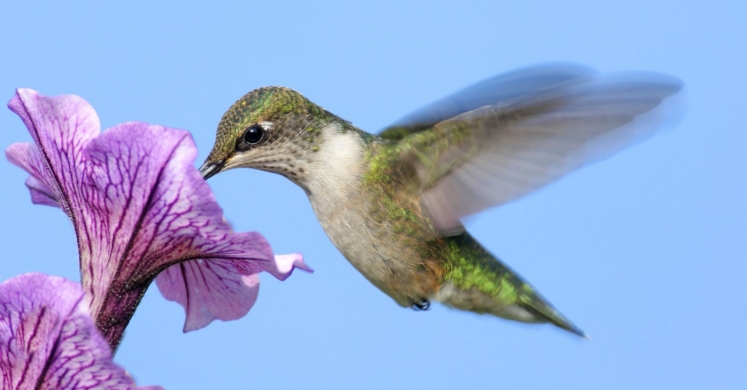Blog

Helpful Hummingbirds
Our pollinator pals are back this season to help our gardens grow! Keystone pollinators are pivotal in maintaining balance and diversity in our environment. Butterflies, moths, bees, beetles, wasps, and other insects are all members of an outdoor ecology, which determines the livelihood of the garden. While all pollinator species are important, remember to look out for our ornithological pollinators, birds! One of the more intriguing pollinators is the hummingbird. They are as elusive as they are beautiful!
Hummingbirds are migratory, visiting the northern United States during the spring and summer months before fueling up for their long journey back to the south. These 3-4 inch miniature helicopters travels so fast, at an average of 25 mph, we often miss them! They are acrobatic with the ability to fly up, down and backwards all while flapping their wings up to 55 times per second!
Hummingbirds, as with all pollinators, are integral to garden systems. This is especially true when planting a pollinator garden adjacent to or intermingled with your vegetable garden. These types of plantings are beneficial for both the grower and the pollinator. Strategically planting flowers amongst or surrounding vegetables and fruits will not only provide the necessary energy for these hummingbirds and other keystone pollinators, but will increase the quantity of your harvest. Hummingbirds also eat pest insects that can be problematic for vegetable gardens. So be sure to plant flowers that will attract these beautiful, iridescently feathered friends.
When planting for hummingbirds, it is important to consider the shape, color and origin of the plant. Trumpet-shaped flowers and the color red are best suited for hummingbirds. Native flowers to include in your planting include: Bee balm (Monarda), Cardinal flower (Lobelia cardinalis) and Sage (Salvia).
Other options to help keep the hummingbirds coming back during the warm months would be to make your own bird feeder! Commercial feeders can be purchased but you can make one, too. If you are feeling creative build your own! Here’s how:
Re-use a 1 or 2 liter bottle
Hang it upside down, so that the funnel shape naturally gathers liquid at the bottom.
Insert two to three straws, no longer than one inch at a 45 degree angle, facing upwards.
Paint the bottle and include a red circle at the base of each straw, to tell hummingbirds where to go!
At the top of the bottle, be sure to create an opening you can funnel liquid into.
Imitate nectar by creating liquid syrup with sugar and water:
Boil water and sugar with a 4:1 part ratio (4 parts water to 1 part sugar)
Keep feeder filled and clean

